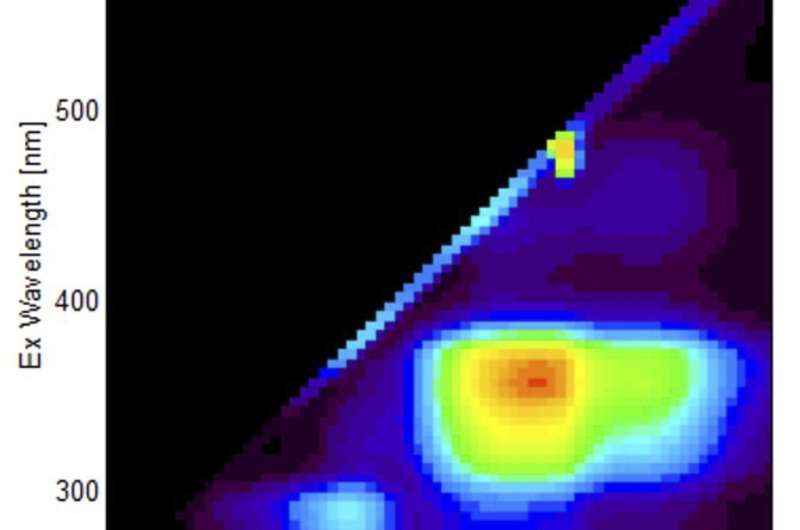Fast and easy detection of amyloid through a fluorescence fingerprinting approach

Amyloidosis is a multifaceted disease group caused by deposits of the misfolded "amyloid" protein in various tissues. Amyloid protein is very unique compared to other native proteins in that it has a cross-β-sheet structure, which gives it distinctive properties, such as resistance to digestive proteinases and transmissibility through ingestion.
Currently, time-consuming histopathological methods are used to diagnose amyloidosis. However, these methods have certain limitations and specific expertise is required for an accurate diagnosis through observation of specimens. In this study, the authors successfully tested a new method to detect AA amyloidosis in cattle aimed at overcoming the downsides of the traditional detection.
The researchers at Tokyo University of Agriculture and Technology (TUAT) and Konica Minolta Inc., Japan, collaboratively published their results in Journal of Veterinary Diagnostic Investigation on October 5, 2021.
"Actually, when we necropsied samples from chickens and quails, we found that the amyloid protein was visible in orange color with the naked eye. This observation led us to hypothesize that amyloid has some optical properties that normal proteins lack. On the other hand, we noticed that the bovine amyloid was not colored, so we came up with the idea that it might be fluorescent", said Tomoaki Murakami, DVM, Ph.D., the corresponding author on the paper and Associate Professor in the Laboratory of Veterinary Toxicology, Cooperative Department of Veterinary Medicine at TUAT.
There had been several reports of intrinsic fluorescence of amyloid, but most of them used amyloid fibrils artificially produced in vitro. Additionally there are only a few studies on amyloid extracted from living tissues. In this study, the authors tested their hypothesis on the properties of bovine amyloid through the use of fluorescence fingerprint analysis on AA amyloid extracted from bovine livers. Indeed, they determined that AA amyloid had a specific fluorescence fingerprint pattern. Furthermore, through this study the authors developed a simple and rapid method for detecting amyloid in bovine liver homogenates.
"Fluorescence fingerprint analysis is used for the analysis of food ingredients and other molecules, but surprisingly very few studies have used this technology in the area of clinical pathology. Fluorescence fingerprint analysis does not require any particular pre-treatment, hence the samples can be swiftly processed. Our detection method will likely lead to the development of more efficient and the rapid diagnostical tools for amyloidosis in the future", Murakami added.
More information: Naoki Ujike et al, Intrinsic fluorescence–based label-free detection of bovine amyloid A amyloidosis, Journal of Veterinary Diagnostic Investigation (2021). DOI: 10.1177/10406387211049217
Provided by Tokyo University of Agriculture and Technology




















